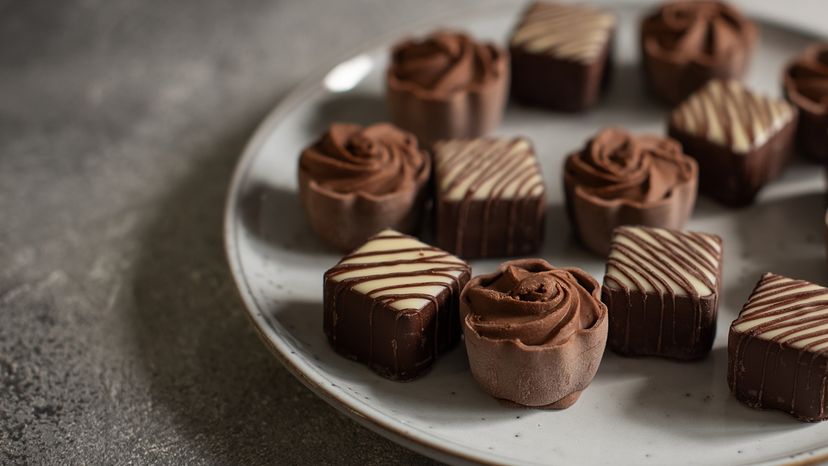Retempering bloomed chocolate is a process that involves melting and then carefully cooling the chocolate to restore its proper crystalline structure and appearance. This method is especially effective for chocolate that has experienced fat bloom (when cocoa butter separates from the cocoa solids).
Here's what you'll need:
Now you're ready to retemper that chocolate:
1. Chop the Chocolate
Begin by chopping the bloomed chocolate into small, even-sized pieces. This helps it melt evenly and facilitates the tempering process.
2. Melt the Chocolate
If using a microwave, place the chopped chocolate in a microwave-safe bowl. Microwave in short, 15- to 20-second bursts at a medium-low power setting (50 percent power) to avoid overheating. Stir between each burst. Continue microwaving and stirring until the chocolate is almost fully melted.
If using a double boiler, fill a pot with water and bring it to a simmer. Place the chopped chocolate in a heatproof bowl and set it over the simmering water, making sure the bowl doesn't touch the water. Stir the chocolate gently until it melts completely.
3. Check the Temperature
Use a food thermometer to monitor the temperature of the melted chocolate. The temperature varies depending on the type of chocolate.
- Dark chocolate: Aim for 88–90 degrees Fahrenheit (31–32 degrees Celsius).
- Milk chocolate: Aim for 86–88 degrees Fahrenheit (30–31 degrees Celsius).
- White chocolate: Aim for 82–84 degrees Fahrenheit (28–29 degrees Celsius).
4. Seed the Chocolate
To encourage the proper crystallization of cocoa butter, add a small amount (about 10–20 percent) of unmelted chocolate pieces to the melted chocolate. Stir continuously until these pieces melt and the mixture reaches the target temperature.
Once you've reached the correct temperature, remove any remaining unmelted chocolate pieces from the mixture.
5. Cool and Test the Temper
Continue stirring the chocolate gently until it becomes smooth and glossy, which indicates that it has been properly tempered. To verify that the chocolate is properly tempered, dip a knife or spatula into the chocolate and let it cool at room temperature. It should harden with a glossy finish.
You can now use the tempered chocolate as needed in your recipe or for dipping and molding. If you're not using it immediately, keep it in a dry airtight container.
